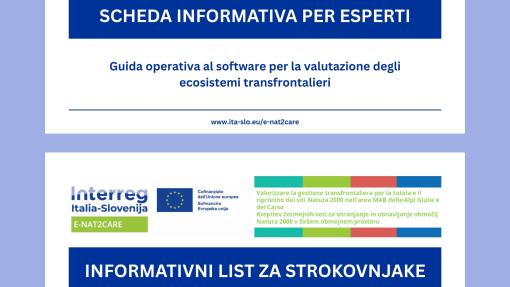
E-NAT2CARE
Specific objective: SO 7 - Enhancing protection and preservation of nature, biodiversity, and green infrastructure, including in urban areas, and reducing all forms of pollution
Typology: Capitalization project
The common challenge of PA is to protect and actively conserve of the high level and widespread biodiversity that extends from the Alps to the sea through the Karst region. The E-NAT2CARE project pursues the objectives of implementation, transfer, and communication in order to use the results of the NAT2CARE project. The general objective of the project is to support the protection and development of biodiversity in PA through the implementation of 2 pilot actions at cross-border level to monitor species defined as "bio-indicators": Rosalia Alpina and Strix Uralensis in the protected areas UNESCO MAB of the Julian Alps and the Slovenian Karst (pilot area the MAB of Park Škocjanske jame), Trieste and Gorizia.
- The general objective of the project is to support the protection and development of biodiversity in PA through the implementation of pilot actions at cross-border level to monitor species defined as "bio-indicators".
- The common challenge of PA is to protect and actively conserve of the high level and widespread biodiversity that extends from the Alps to the sea through the Karst region.
- Implementation, transfer, and communication in order to use the results of the NAT2CARE project.
- Implementation and transfer of the output – ecosystem services configured as the third pilot action.
- The project will implement the ecosystem/habitat area and the ES with the Karst area, specifically in the MAB pilot area of Park Škocjanske jame.
- The cross-border cooperation will allow sharing common monitoring approaches and consistent measures for ecosystems/habitats protection, which are the same along the border from the Alps to the Karst.
- Identification and mapping of ecosystem services is a European methodology that will be applied for the first time in a transboundary area.
- The communication will be carried out on three levels: the first one is addressed to the partnership and managers of protected areas, the second one to the stakeholders of the sector and the third one to the general public and stakeholders in education and training.
The main project outputs will be available soon.



